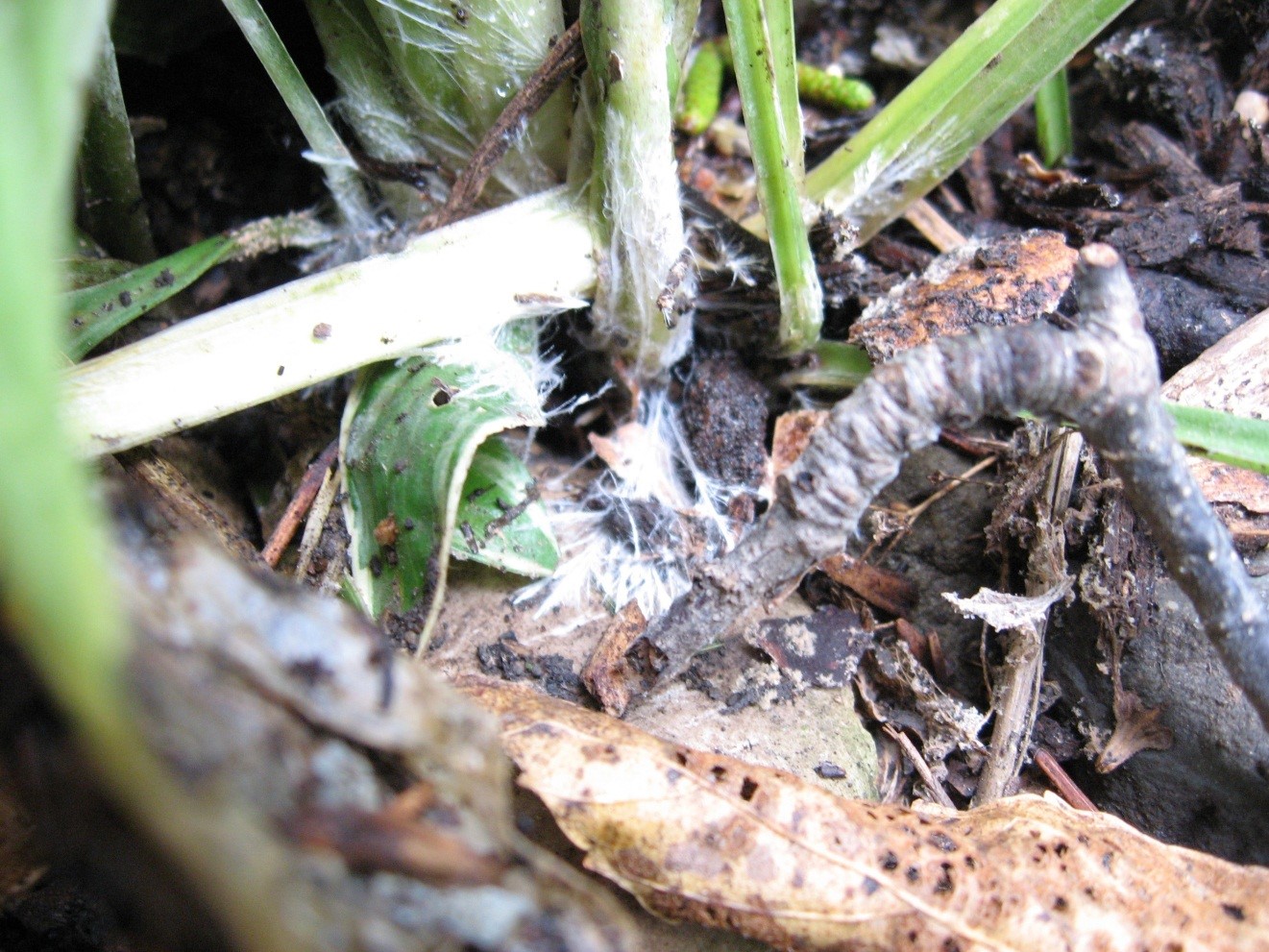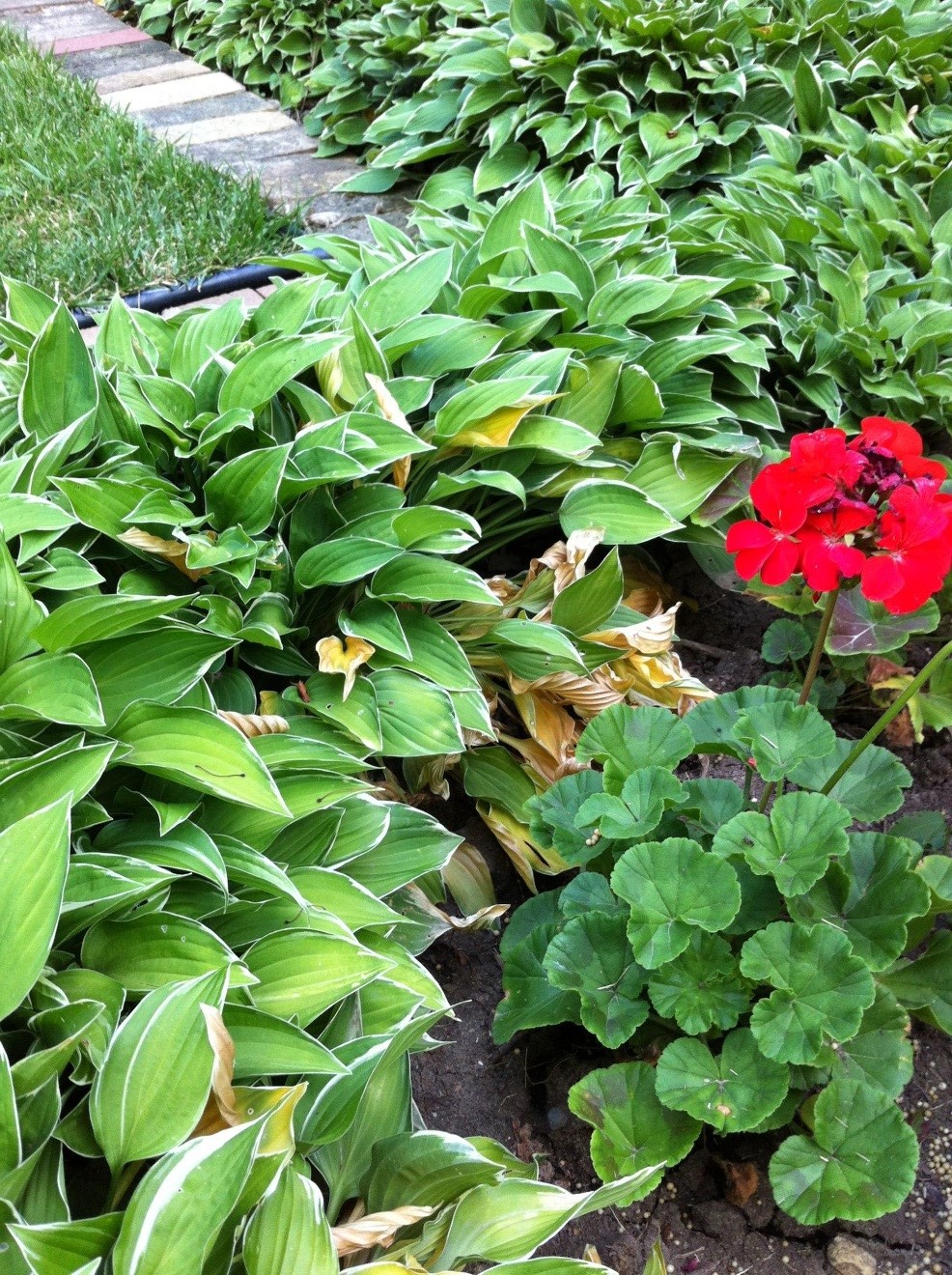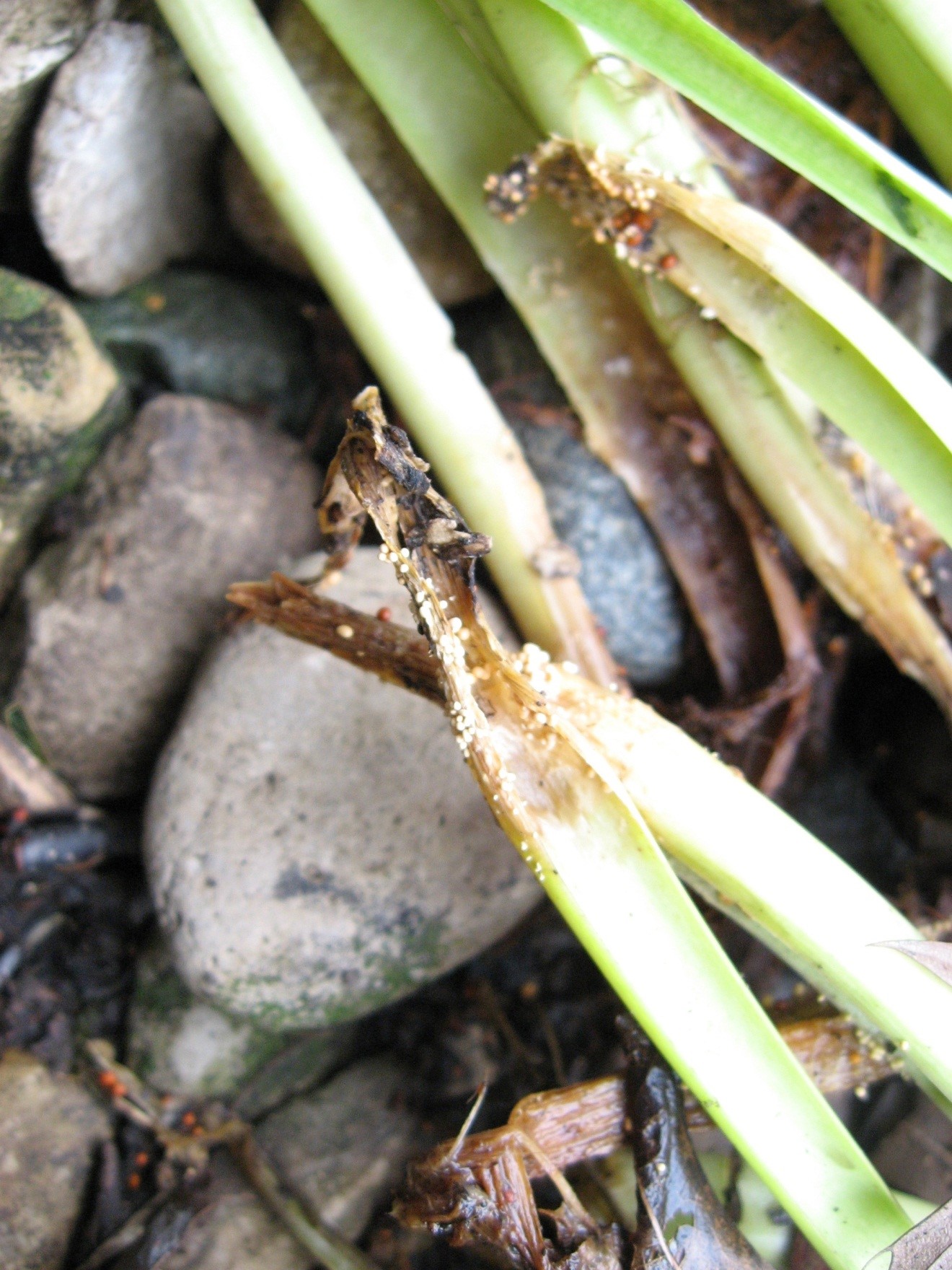Issue 6, June 28, 2019
Hosta Petiole Blight
Hosta Petiole Blight, Hosta Crown Rot, and Southern Blight are common names for a fungal disease caused by Sclerotium rolfsii. Under favorable conditions, the pathogen can rapidly take-over and defoliate an otherwise healthy hosta. This disease is particularly devastating because of the pathogen’s ability to survive in the soil and on the soil surface from several months to years. A tough, mustard seed-like overwintering structures, known as sclerotia (Image 1), contribute to the pathogen’s long-term survival.
The pathogen becomes active during warm, humid weather at which point the sclerotia germinate and tufts of white mycelium fan out over the soil surface (Image 2). When the fungus comes in contact with a host, it releases oxalic acids that break-down plant cells walls and tissues. On hostas, symptoms begin as wilting and discoloration of lower leaves (Image 3). In a short time, the upper leaves also wilt; and close inspection shows a soft, brown rot of the base of petioles (Image 4). The entire leaf soon collapses above the site of infection.
Prevention and sanitation are important for disease management. The fungus spreads by sclerotia or by mycelium growing from the sclerotia. Contaminated nursery plants and plants exchanged between gardeners aids long distance spread of the disease. Closely inspect plants for symptoms and signs of the disease before purchasing or be accepting new plants. If you spot the disease in your landscape, remove all of the infected plant parts, placing them directly into a bag to remove them from the garden. Be careful not to spread any of the fungal mycelium or sclerotia. Do not compost diseased plants. Remove the top several inches of soil around the plant, again being careful not to spill any as you work. Fungicide options are limited, and will suppress but not completely eliminate the pathogen. For homeowners, a few products with the active ingredient Tebuconazole list Southern Blight on their labels. Commercial applicators also have access to products with Flutolanil as their active ingredient. Mulch may contribute to the overwinter survival of the pathogen. Pulling mulch back from the base of plants before winter may help to kill the fungus. There are differences in levels of susceptibility among hosta cultivars, but nothing with high levels of resistance. Iowa State University has an excellent publication on Sclerotium Blight: http://www.plantpath.iastate.edu/files/SUL8.pdf

Image 1. Mustard seed-like sclerotia of Hosta Petiole Blight

Picture 2. Hosta Petiole Blight mycelium spreading over soil surface and hosta petioles

Picture 3. Early symptoms of Hosta Petiole Blight. The lower leaves are discolored, wilting and collapsing.

Picture 4. Blighted petiole with sclerotia
Author:
Travis Cleveland